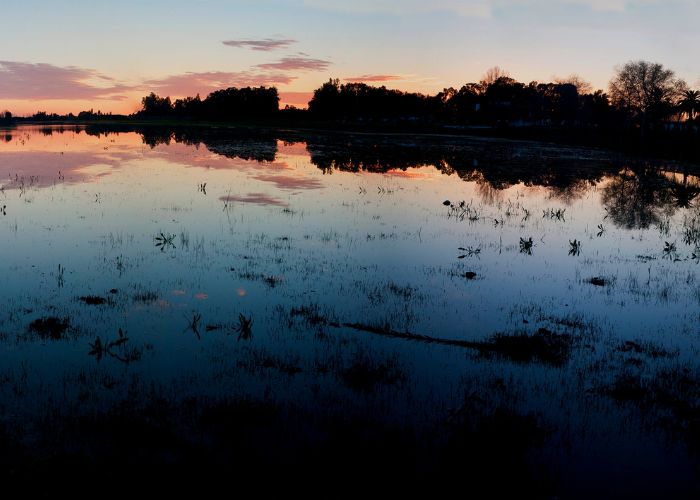The Spanish Ornithological Society (SEO) Birdlife has warned that bird reproduction in Doñana National Park is experiencing an ‘unprecedented decline‘, and urged the authorities and the production sectors of this wetland to act ‘jointly, comprehensively and urgently‘.
SEO BirdLife warns of the risk of ‘collapse’ and the ‘dramatic situation’ of Doñana due to poor management. Moreover, human activity has a negative impact on Doñana’s birds, which play a key role in natural recovery. Some of the causes include pollution, habitat change and climate change with associated periods of long droughts. Furthermore, overexploitation of resources and water pollution are the main causes of these large lagoons gradually drying up.
Flamingo and white-headed duck
The non-governmental organisation Birdlife bases its statement on a report, made public on Thursday on the occasion of International Wetlands Day. A total of 22 breeding species were analysed. Moreover, only two showed a positive breeding trend between 2004 and 2022. These were the flamingo and the white-headed duck.
50 species of waterbirds
In a statement, SEO Birdlife pointed out that when the marshes of Doñana National Park reach their optimal flood levels, around 50 species of waterbirds can breed. Some of these are “hugely endangered”. Two such species that are in a critical situation are the marbled teal and the coot. The lagoons are needed for the formation of colonies of thousands of herons, storks, moorhens, spoonbills and flamingo. They are also important for those of birds of prey characteristic of wetlands such as the marsh harrier.
Historical series
The historical series on the evolution of bird populations between 2004 and 2022, compiled by researchers at the Doñana Biological Station (CSIC), shows that most breeding waterbirds are in a worrying situation, such as the common tern, the brown pintail, the marbled teal, the marsh harrier and the black-bellied sandpiper.
Causes of decline
According to the organisation, some of the threats that explain this decline in reproduction are caused by the following;
- pollution
- habitat change due to the unregulated growth of irrigated agriculture
- poor management of extensive animal husbandry
- illegal hunting
- the effect of nest predation, mainly by wild boar, but also by foxes, dogs and rats
- climate change
Problems must be tackled
‘The quiet spring – with little breeding activity – we are experiencing in Doñana is the result of a series of problems of different nature and magnitude. There are the serious and extensive problems arising from water management in the area. And also there are issues that are much easier to solve. Moreover, these include public use of certain areas, changes in species management, agreements with land owners and livestock management based on ecological criteria,’ explained the head of SEO/BirdLife Doñana’s technical office, Carlos Dávila.
According to him, ‘in order to increase the volume of marshes this spring and in the coming springs, it is clear that this set of problems must be tackled in a coordinated and comprehensive way, with the help of all governments, the production sectors and with the more than necessary participation of the local communities living in, for and from Doñana’.
SEO/BirdLife executive director Asunción Ruiz believes that ‘as in most environmental issues, what is happening with Doñana and with all wetlands in Spain can be solved with the will and agreement of all parties’.


